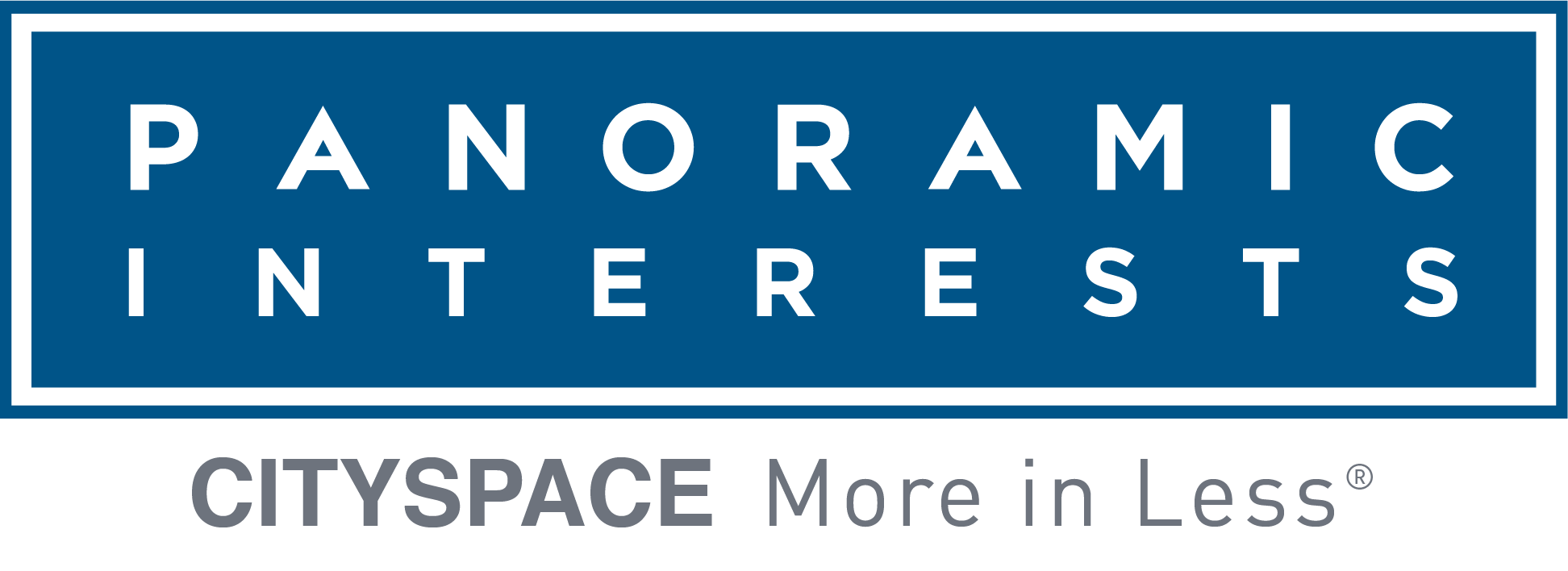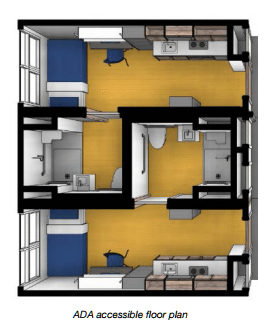Frequently Asked Questions
MicroPAD® Dwelling Basics
The MicroPAD® dwelling is a 160 square foot fully self-contained residential dwelling, with a private bathroom and kitchenette. Units are stacked to create buildings up to 12 stories tall.
Our units are about the size of a small, modern hotel room, and are fully functional dwellings with a living area, cooking area, and a private bathroom. The units are larger than many, if not most, existing SRO rooms, and are built to modern seismic and fire safety standards.
Compliance
Yes. It meets and exceeds all relevant codes, including, but not limited to:
- 2013 CALIFORNIA BUILDING CODE (CBC) & SAN FRANCISCO AMENDMENTS
- 2013 CALIFORNIA MECHANICAL CODE (CMC) & SAN FRANCISCO AMENDMENTS
- 2013 CALIFORNIA PLUMBING CODE (CPC) & SAN FRANCISCO AMENDMENTS
- 2013 CALIFORNIA ELECTRICAL CODE & SAN FRANCISCO AMENDMENTS
- 2013 CALIFORNIA ENERGY CODE
- 2013 CALIFORNIA FIRE CODE AND SAN FRANCISCO AMENDMENTS
- ACCESSIBILITY CODE – 2013 CALIFORNIA BUILDING CODE; CHAPTERS 10, 11A, 11B (FAIR HOUSING ACT)
- 2013 NFPA 72 (NATIONAL FIRE ALARM CODE)
- 2013 NFPA 13, 14, 24 (INSTALLATION OF FIRE SPRINKLER SYSTEMS)
- TITLE 19 CALIFORNIA ADMINISTRATION CODE
- 2013 TITLE 24 CALIFORNIA ADMINISTRATIVE CODE
- 2013 ADA STANDARDS in common spaces
MicroPAD® buildings fall under SF Planning Code for Group Housing/Congregate Residence. “Group Housing” — with varying density limitations — is either principally-permitted or allowed via the Conditional Use process in all Zoning Districts with the exception of RH-1 (“One-Family”) Districts. Group Housing, per Sec. 102, Sec. 790.88(b) and Sec. 890.88(b) is defined as follows: “A Residential Use that provides lodging or both meals and lodging, without individual cooking facilities, by prearrangement for a week or more at a time, in a space not defined by this Code as Dwelling Unit.
However, Zoning Administrator Interpretation 209.2(a) Effective Date 10/05 states:
” … Group Housing units (i.e., “bedrooms”) are allowed to have limited kitchen facilities (e.g. “pantries”) with the following specifications: a small counter space, a small under-.counter refrigerator, a small sink, a microwave, and a small two-ring burner. Such limited kitchen facility shall not include any other type of oven, as that would constitute a full kitchen.”
2013 SAN FRANCISCO BUILDING CODE (based upon the 2013 California Building Code)
“Group Housing” is considered a “Congregate Residence” in the Building Code.
A Congregate Residence, per ·chapter 2 “Definitions” is defined as follows:
“Any building or portion thereof that contains facilities for living, sleeping and sanitation, as required by this code, and may include facilities for eating and cooking, for occupancy other than a family. A Congregate Residence may be a shelter, convent, monastery, dormitory, fraternity or sorority house, but does not include jails, hospitals, nursing homes, hotels or lodging houses.”
Assuming that the project is privately funded, then the accessibility requirements of Chapter 11A — rather than Chapter 11 B — apply.
Per Sec. 1102A.1.4 “Building Accessibility – Where Required”, a Congregate Residence is considered a
“Covered Multi-Family Dwelling”. For the purposes of accessibility, it is basically consider a single (big) dwelling unit.
Per Sec. 1128A “Covered (Multi-Family) Dwelling Units”, a Congregate Residence must have an accessible kitchen (only one) per Sec. 1133A “Kitchens” and one bathroom that complies with Sec. 1134A.2 Option 2.
Accordingly, additional “bathrooms” or “bar/pantries” (i.e., limited kitchen facilities) within the individual
“bedrooms” of the Congregate Residence do not have to be fully accessible.
Yes. MicroPAD® buildings meet all ADA and FHA accessibility requirements. There are two versions of the MicroPAD® unit, one of which is 100% accessible with a roll-in shower and other special features for accessibility. ADA/FHA typically requires 5% of units are fully accessible, as shown in drawing. But Panoramic can increase that percentage to whatever level a client requires.
Construction
Steel modular units are stronger, easier to build, and more economical than traditional construction. In addition, steel modular units isolate and control:
- Flooding: built-in secondary drain to contain plumbing mishaps
- Fire: 2-hour fire ratings and fully sprinklered
- Odors: 24/7 fresh air exchange & ventilation
- Insects: steel demising walls prevent spread of pests
- Noise: Double-wall construction & air spaces between units provide engineered soundproofing
Yes, there have been over 20,000 hotel rooms built worldwide using this same technology.
Yes, technically. But it is not cheap. MicroPAD® units are permanent housing, comparable to site-built structures, but they can be moved.
We can build these projects 40%-50% quicker than a site-built project. As the contractor does the excavation, utilities, and foundation work, the factory fabricates, inspects, tests then ships the units. The building is then assembled on-site over a period of 4-8 months, depending on building size.
American inspection firms, present in the factory, verify and test all aspects of construction. The State of California Housing and Community Development department pre-approves building plans and specifications, and certifies compliance.
We are working with factories in the US, Europe and Asia. We have previously developed factory-built housing using a factory in Sacramento.
Panoramic Interests. We take all the financial risk associated with building these projects. Once the building is complete, we deliver turn-key, fully furnished MicroPAD® units to the city or county.
Yes. Our last prefab project, 38 Harriet, was LEED Platinum. Factory built housing typically produces much less waste than traditional construction.
Yes. The MicroPAD® units exceed seismic requirements as detailed by the CA Building Code and the International Building Code.
The major components of a modular building are built in a factory, under controlled conditions that improve quality and accelerate production. The modules are then trucked to the building site where they are stacked.
A general contractor with the usual roster of subcontractors. At least ⅔ of the construction costs are spent for on-site work, with local contractors. We have used Pankow, a union contractor, for our last 2 developments in San Francisco, and plan to use them on our next MicroPAD® project.
Other
Sure, we feel that the quality and durability make them suitable for housing anyone.
No, we aren’t planning on selling the units individually. We are building these for the homeless.
Panoramic will construct the building at its cost, then rent the entire building to the city or county, on a master lease. The City or County (or its property manager) would select the residents.
Yes, the master lease may include an option for the City or County to buy the building.
Learn More
If you are a landowner or municipality who wants to partner with us, please click here to contact us.



